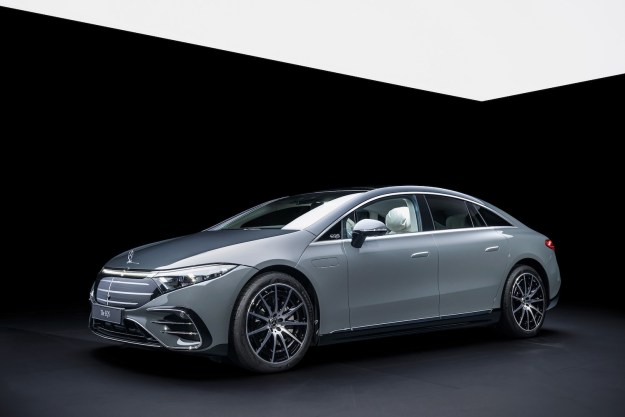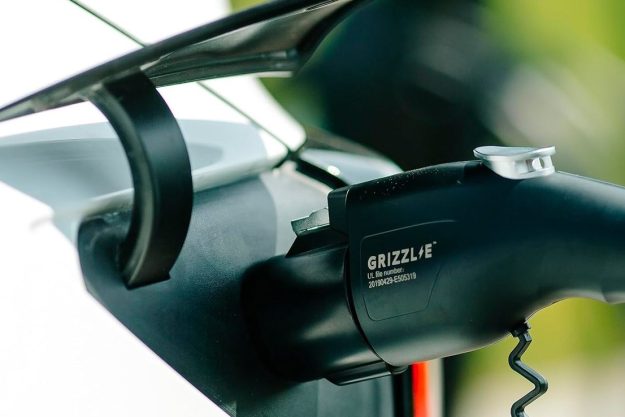Most of us take the tires on our car for granted. A typical vehicle will need new tires only a few times in its life, and depending on the vehicles you buy and how long you keep them, you might even go a decade or more without visiting a tire store. For the most part, we just accept the tires that are on the vehicle when we buy it.
I recently attended a tire launch event (yes, that’s a thing, just like cars) and had a chance to spend some time with employees of Firestone Tire and learn a little more about how tires are made and what the differences are between them. As with most topics related to a modern car, there’s a lot more going on than you might think, and some very smart people are putting their best efforts into making long-lasting, high-performance tires for a variety of applications.
You wouldn’t put a fat set of off-road tires on a Ferrari, and you wouldn’t put on a set of high-performance summer tires for driving in the snow.
“One analogy that we use a lot that is about shoes,” says Justin Hayes, Product Manager for Light Trucks and SUVs at Firestone’s parent company, Bridgestone. “So if you walk to the grocery store, if you walk on the beach, if you’re running on a trail, or if you need to shovel snow in your driveway, you’re going to want to put a very different shoe on your foot for each of those activities.”
The analogy Hayes makes is that the type of tire that you need on a vehicle is based on the intended usage. You wouldn’t put a fat set of off-road tires on a Ferrari, and you wouldn’t put a set of high-performance summer tires on your car for driving in the snow.
Popular tire categories
“If you’re planning on highway and city driving, we recommend an HT tire, meaning Highway Terrain,” Hayes explains. “Those tires can go on gravel roads or your yard if you need to drive on the grass or something like that. But it’s really they are intended for an on-road application.”
Most tires on the market fall into the HT category, from top performance tires to all-season radials.
“If you’re expecting to be off-road a little bit more,” Hayes says, “and you need a little bit more traction capability, then we recommend an AT, or All-Terrain tire. It’s a lot more squared off on its shoulder and has a more open tread.”
Like any system on a car, there are trade-offs between different choices.
“The Highway Terrain tire is going to be a little quieter, all things being equal,” Hayes allows. “While the AT tire is going to be louder, but it will have more traction off road.”
At the far end of the spectrum from highway tires is the MT or Maximum Traction category, designed to keep a 4WD vehicle moving over mud, rocks, loose surface, or any other obstacles you might encounter. We were in the mountains of Virginia to try out Firestone’s latest MT offering, the Destination M/T2.
“We see two types of users of an MT tire,” Hayes remarks. “Those who really need that traction, and those who really just love the off-road look. You see a lot of lifted trucks, lifted Jeeps, those guys. They just love a big luggy-looking tire even if it never goes off road. They want the 20-inch and 22-inch rim diameters.”
The trade-off with driving an MT tire on the street is extreme noise and comparatively limited traction on pavement.
MT tires also continue their knobby tread pattern onto the sidewall of the tire. There are two traction benefits to that when you’re off-road. First, if your tires are in grooves, the side lugs (as they’re called) will grab the sides of the grooves and help you along. Second, if you have to reduce pressure in your tires to get the grip, the side lugs become part of the tread face, adding to your available traction.
The trade-off with driving an MT tire on the street is extreme noise and comparatively limited traction on pavement. You can hear the roar any time a truck goes by with big off-road tires.
“So you can kind of see with the shoe analogy,” Hayes points out. “I have my flip flops for the beach, I’ve got my walking-around shoes, I’ve got my hiking shoes.”
Differences you can’t see
It’s easy to see the differences between a big knobby off-road tire and a smooth dry pavement performance tire, but there are other differences you can’t see, such as the rubber compound used to make the tread.
“From a compound perspective, in general the highway tire is going to be softer compared to an MT tire,” Hayes says, “because we really want that MT tire to resist chips and tears knowing it’s going to go off-road. The tire compound has an impact on the contact area, which influences tread-wear, rolling resistance, and wet performance. It’s very important for noise as well.”
The softest compounds are used on winter tires designed for snow and ice driving, because they need to conform around ice crystals and squeeze out the thin layer of water that covers most ice. Modern winter tires also use sipes, which are razor-thin cuts in the treads to help the tires grip on snow.
“That’s going to give you maximum traction in snow,” Hayes says.
Using an MT tire in hideous conditions
We were in Virginia to torture test Firestone’s newest tire, the Destination M/T2, designed for maximum traction in mud, loose dirt, and over rocks, so that’s what we did. With help from Overland Experts, who also train the U.S. military in off-road driving, we took a brace of Jeeps outfitted with the Firestone tires over a staggeringly impossible course that took us on trails, up hillsides, and down a few hundred yards of mud wash.
The tires performed as we knew they would, but here’s the thing. Most serious off-road courses require that you deflate your tires to give them extra ability to deform around rocks and dig in to whatever muck you happen to be driving through. We did all these exercises at the listed pressure for on-pavement driving, and the Firestone tires just ate it all up. We even left the diff locks turned off for the duration. Running through axle-deep mud, the Jeeps never entirely lost traction. The verdict was easy: these tires do what Firestone says they do.
What you care about
This is all interesting information if you get totally geeked out about tires, but ultimately, what you care about is this – if you buy the right tires for the kind of driving you do most often, you’re getting a piece of equipment that has been carefully thought through and developed as thoroughly as your car’s engine or brakes. There really is more to the tires underneath your car than meets the eye.










